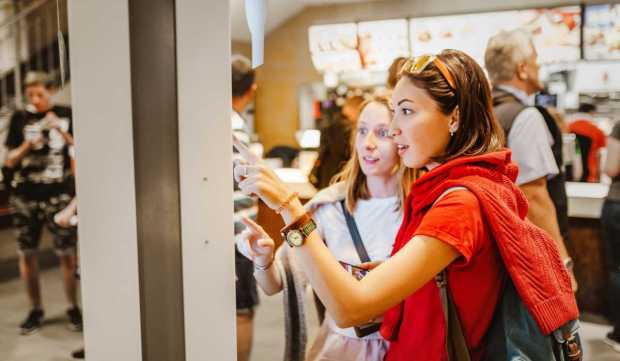Restaurants Seek to Balance Full-Service Flourishes With Digital Ease

As quick-service restaurants (QSRs) rush to automate, their full-service restaurant (FSR) counterparts are forced to take a more nuanced view of innovation. While labor challenges demand some adoption of new technologies to make them run more efficiently, these restaurants are called upon to find the balance between these technologies and the level of service their dine-in customers expect.
For instance, own-device ordering, while highly popular at grab-and-go restaurants, is more polarizing when it comes to on-premise dining. Take, Bartaco, a full-service chain with more than 20 locations across 11 states and Washington, D.C., which has switched almost entirely to own-device payments. In an interview with PYMNTS, Scott Lawton, the brand’s CEO, argued that tech-powered FSRs are branching into their own restaurant category.
“You’ve got QSR, fast-casual. I think there’s going to be a new class. We call it ‘on-demand hospitality,’” Lawton said. “It’s this hybrid—an experiential restaurant that implements more digital, so that it can run a leaner business but really focus on the food quality and the experience. I know quite a few restaurant groups and entrepreneurs that are putting together these types of brands right now.”
By the Numbers
Many consumers do expect a more person-to-person experience when dining on premises, according to data from the May/June edition of PYMNTS’ Digital Divide study, The Digital Divide: Technology, The Metaverse And The Future Of Dining Out, created in collaboration with Paytronix. The report, which drew from an April survey of about 2,500 U.S. consumers, reveals that, while more than half (51%) of grab-and-go customers state that viewing a menu with a QR code has a positive impact on their satisfaction, only 26% of dine-in customers say the same.
Additionally, there are other demographic factors that may make a given restaurant customer more or less inclined to feel comfortable with more technology in the dine-in experience.
“There’s still some demographics and age groups that are still not comfortable with using their phone and they don’t feel like their data’s secure,” said Lawton. “We have to … have a great alternative for them.”
Indeed, continuing with the QR code menu example, older consumers are significantly less likely to state that this technology improves their experience than their younger counterparts. Fifty-six percent of gen Zers state that it has a positive impact on their satisfaction, compared to just 16% of baby boomers and seniors.
All told, 13% of restaurant customers strongly agree that restaurants are becoming increasingly less personal, and it affects their satisfaction. Plus, an additional 26% somewhat agree.
As these tech-powered, self-service dine-in establishments become more common, consumers may become more familiar with the distinction between these kinds of restaurants and other kinds of FSRs and consequently may become better able to pick on any given occasion the eatery that offers the experience they would prefer.
Related: Restaurants Tinker With Tech Recipe to Balance Efficiency and Personal Service
Under Control
Lawton recalls that, as the company has put together its tech presence, he has grown increasingly cautious of solutions provided by processors that promise easy answers in the near-term but could lead to greater sacrifices down the line.
“Everyone who’s building out tech right now would like to get some part of your processing or your transactional, so they’re giving a lot of equipment away and giving really great technology and insights to operators, saying it’ll boost the top line,” Lawton said, “but they really, ultimately are trying to get your bottom line.”
He noted that, as restaurants integrate these technologies into their operations, they risk becoming overly reliant on those providers. When these systems come from processors, he argues, restaurants may have little recourse if said providers raise rates. Instead, he contends that restaurants would be better served to make sure that they have controls in place for the long-term, even if it means not jumping on the “cool” new technology right away.
Lawton likened this strategy on processors’ part to the “frog in the pot philosophy,” asserting that they may slowly gain control of restaurants dependent on their technology.
“You put the frog in a pot of hot water, he’ll jump right out,” Lawton said. “You put him in a pot of cold water and slowly turn it up, you boil him.”
